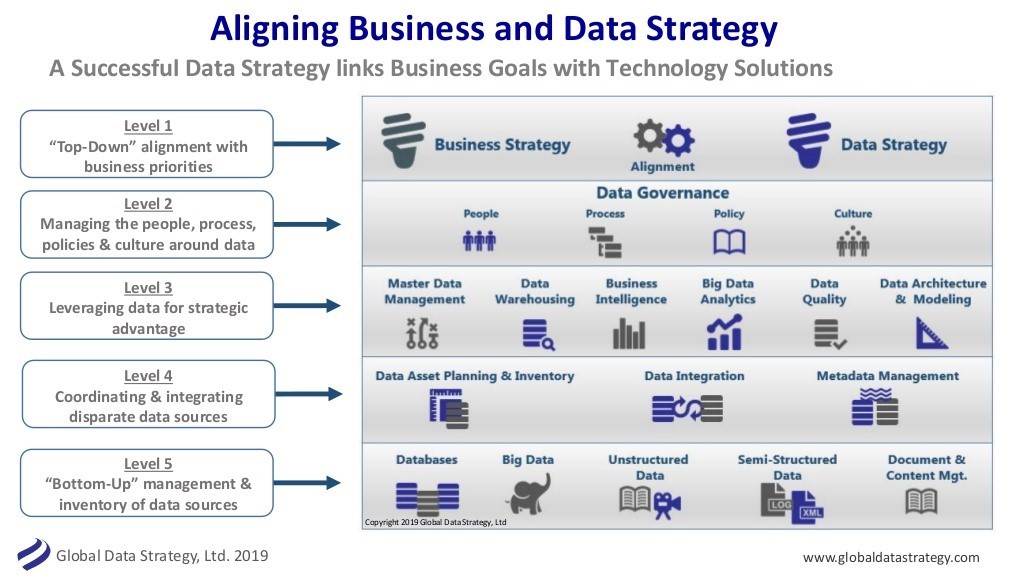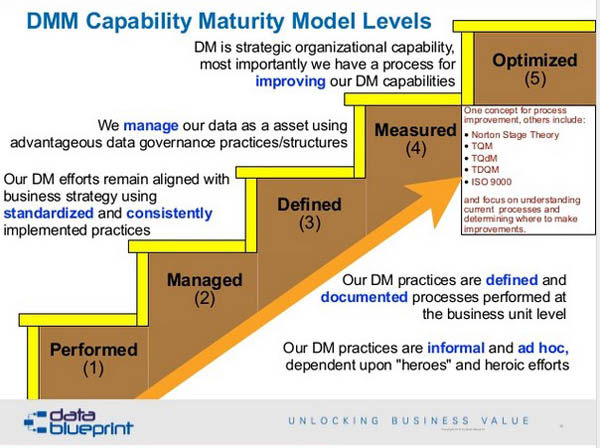Maturing Data Governance means growing an organization’s conception and management of its data assets from a narrow IT project conception to the broader business.
Maturing Data Governance means growing an organization’s conception and management of its data assets from a narrow IT project conception to the broader business. Organizations can no longer ignore this approach as they drive to digitally transform, improve business efficiency and effectiveness through digitization and human resources. Al-Ruithe, et al. hammer this point home by stating that researchers and practitioners often confuse the IT governance that centers around hardware and applications with Data Governance.
This muddling of IT and Data Governance can be understood as the technology appears more visible within a digital transformation project. Think of Amazon, and picture a website where customers buy stuff. Buy a sneaker from the Nike app on your phone and think of it as the digital transformation. Then, Data Governance gets assigned to a particular IT project or box on the enterprise Data Architecture model.
Unfortunately, many organizations, misalign Data Governance with business needs. According to The DATAVERSITY® Trends in Data Management 2020 Report, about 83% of survey participants said their organization either had a Data Governance in place or plans for one. But, only 7.34% had Data Governance at a high level of maturity. As Jenny Schultz from Freddie Mac states, “we have tried to do the ‘data thing’ more than a few times, driven by IT, but it never stuck because the business didn’t see the value of governing it.”
So, how does a company mature its Data Governance to serve the business better? Research reveals at least four common themes:
– Connect Data Strategy and Data Governance.
– Use a Data Governance Maturity Model.
– Build credible Data Governance from the top down.
– Show value through collective Data Literacy.
Connect Data Strategy and Data Governance
Mature organizations connect a business aligned Data Strategy with Data Governance. They achieve this goal by looking beyond data assets for purposes of individual projects to serve and evolve with the business. Jeff Fuller writes in the North Carolina Medical Journal that organizations need to know which Data Governance metrics matter by realigning to Data Strategy priorities. When companies become myopic by concentrating only on datasets that are most readily available, the capacity to predict or deal with the business context tomorrow suffers. On the other hand, when organizations align a good Data Strategy with Data Governance, they focus on the critical data assets that serve the enterprise.
In addition to better-adapting information to future business needs, tying in the Data Strategy with Data Governance widens the understanding of how well it supports it. Donna Burbank of Global Data Strategy, Ltd., created a visual describing a top-down and bottom-up business perspective of Data Strategy, technology, and Data Governance.

For example, CEMEX developed a data-driven strategy with the help of Burbank. It centered around customer experience, from the first contact to sale. CEMEX evaluated its existing governance on its Data Strategy and repurposed it using “…small and agile-based digital teams to prioritize projects and align different internal customers toward a common goal.” Through this initiative, CEMEX matured its Data Governance in symmetry to the CEMEX Data Strategy, realigning governance with business goals.
Use a Data Governance Maturity Model
In addition to Data Strategy, knowing how to mature Data Governance towards a business mindset requires benchmarking a company’s Data Governance execution to what it was before and to generally known best practices. It means periodically and objectively assessing Data Governance using a maturity model.
Different models exist with a distinct emphasis on different goals. Gartner, IBM, the Capability Maturity Model of Integration (CMMI), and the Data Management Maturity (DMM) model represent some common examples. Choosing a good model depends on business challenges, structure, and culture.
For example, the State of Arizona, a decentralized government that operates by consensus between agencies, needed to find a way to better share data. Jeff Wolkove and his team worked on a solution to Arizona’s problem. They ended up using a widely accepted and standardized data management standard, the Data Management Maturity (DMM) model from CMMI (See the diagram below).

For example, CEMEX developed a data-driven strategy with the help of Burbank. It centered around customer experience, from the first contact to sale. CEMEX evaluated its existing governance on its Data Strategy and repurposed it using “…small and agile-based digital teams to prioritize projects and align different internal customers toward a common goal.” Through this initiative, CEMEX matured its Data Governance in symmetry to the CEMEX Data Strategy, realigning governance with business goals.
Use a Data Governance Maturity Model
In addition to Data Strategy, knowing how to mature Data Governance towards a business mindset requires benchmarking a company’s Data Governance execution to what it was before and to generally known best practices. It means periodically and objectively assessing Data Governance using a maturity model.
Different models exist with a distinct emphasis on different goals. Gartner, IBM, the Capability Maturity Model of Integration (CMMI), and the Data Management Maturity (DMM) model represent some common examples. Choosing a good model depends on business challenges, structure, and culture.
For example, the State of Arizona, a decentralized government that operates by consensus between agencies, needed to find a way to better share data. Jeff Wolkove and his team worked on a solution to Arizona’s problem. They ended up using a widely accepted and standardized data management standard, the Data Management Maturity (DMM) model from CMMI (See the diagram below).
—
Fuente: Michelle Knight



